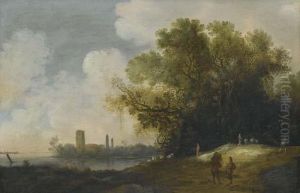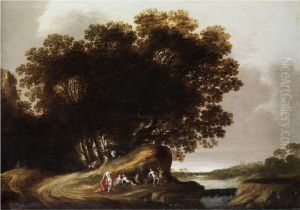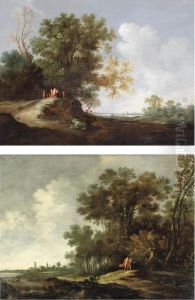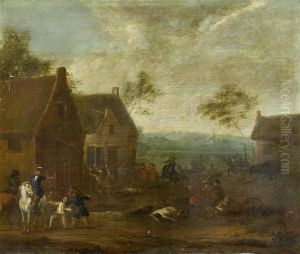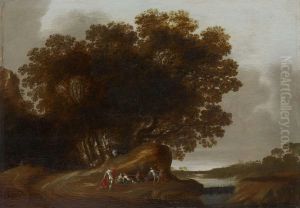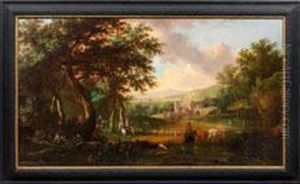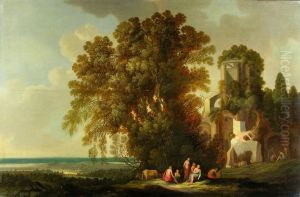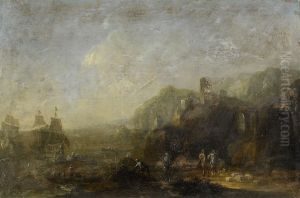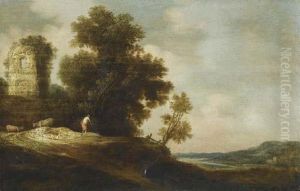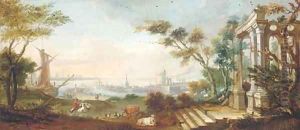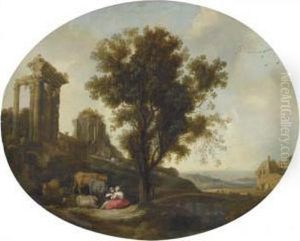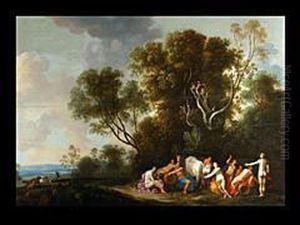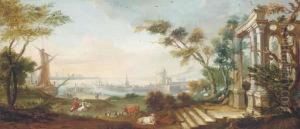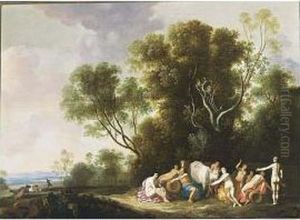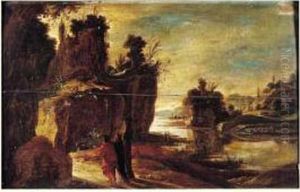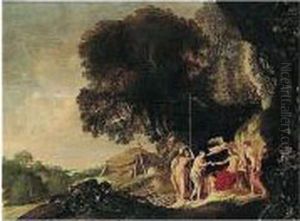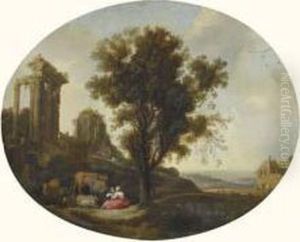Dirk Dalens I Paintings
Dirk Dalens I was a Dutch Golden Age painter, born in the year 1600. His artwork primarily revolved around landscapes and seascapes, a common theme for many artists of his era, reflecting the Dutch people's strong connection to their maritime and rural landscapes. Dalens was part of a period in art history known for its incredible flourishing of the visual arts, a time when the Dutch Republic was at the peak of its economic and cultural power, often referred to as the Dutch Golden Age.
Dalens' contribution to the art world was notable for its detailed representation of nature and the serene beauty he managed to capture in his landscapes. His works often depicted tranquil scenes with meticulous attention to the play of light and shadow, a testament to the skills that were highly valued by his contemporaries and art collectors of his time. Despite the peacefulness often found in his paintings, Dalens was also capable of portraying the dynamic and sometimes tumultuous relationship between humans and the natural world, a theme that resonated with many during the 17th century.
Throughout his career, Dirk Dalens I had the opportunity to influence and be influenced by other artists of the Dutch Golden Age. His style, while unique, also shared similarities with the works of other landscape painters of his time, suggesting a vibrant community of artists who inspired and pushed each other towards greater artistic achievements. However, compared to some of his contemporaries, Dalens did not gain the same level of fame posthumously, and as a result, his works are less known to the general public today.
Dalens died in 1676, leaving behind a legacy that, while not as widely recognized as that of some of his peers, still contributes to the rich tapestry of Dutch Golden Age painting. His works continue to be studied and appreciated by art historians and enthusiasts who recognize the value of his contributions to the art world. Dirk Dalens I's paintings are cherished for their beauty, technical skill, and the window they provide into the landscape and culture of 17th century Netherlands.
